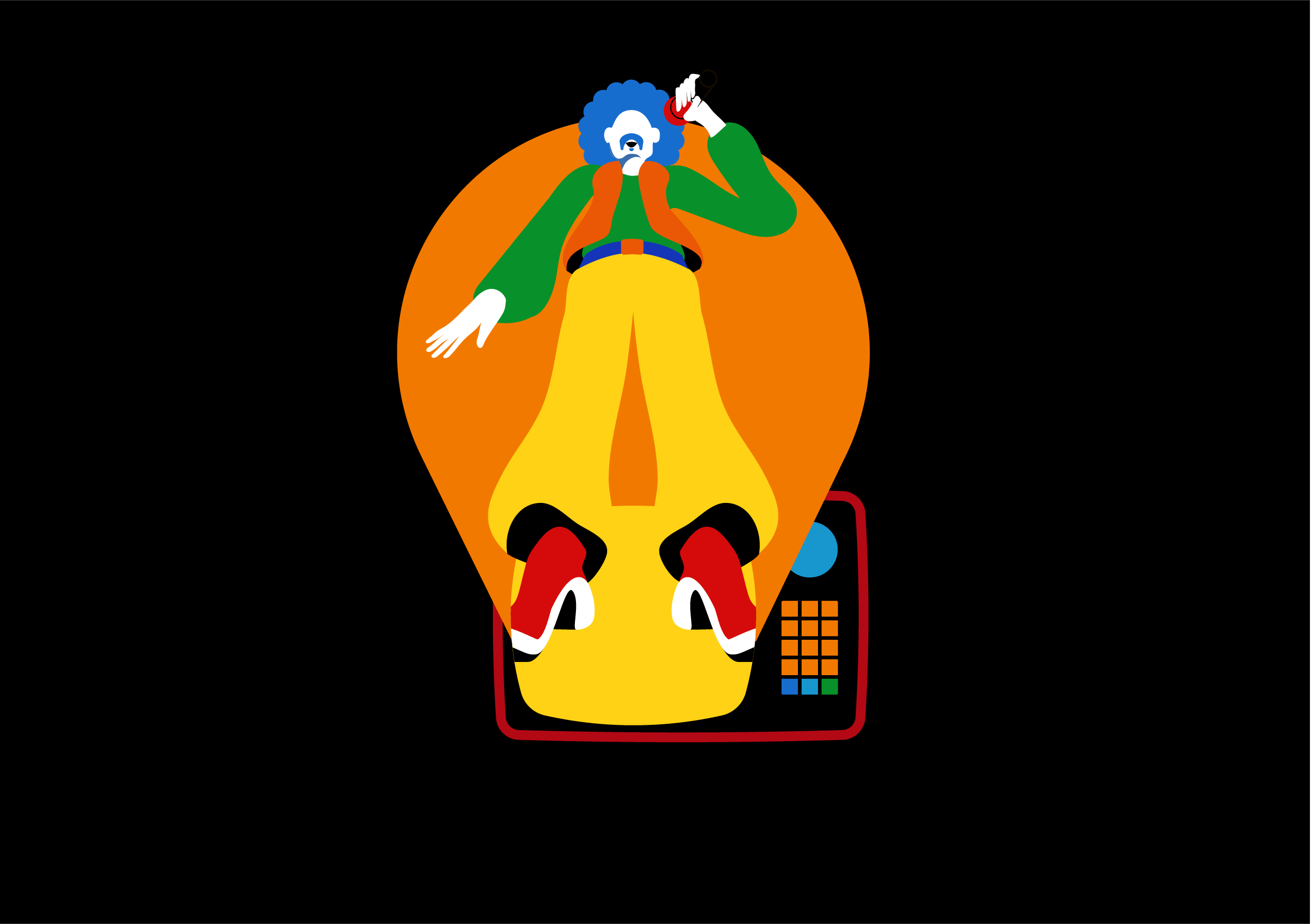Trend 1 – Connected TV
Connected TV (CTV) offers numerous benefits to brands. It helps recover lost linear TV audiences, expands reach and improves engagement. CTV excels in precise audience segmentation, ensuring targeted marketing. Brands gain insights from data-driven analysis, enhancing understanding of consumer behaviour. CTV offers a high-attention, brand-safe, viewable ad environment, while interactive advertising enables tailored experiences with shoppable ads driving mobile purchases. Notably, CTV extends beyond traditional broadcasters, appealing to consumers seeking diverse content options across multiple platforms, breaking the broadcast market’s monopoly.
CTV is evolving rapidly as people spend more time streaming CTV content than watching linear TV. Ad-supported streaming apps are growing fastest, with CTV set to contribute a 10.4% boost to ad revenue between 2023 and 2028.[1] However, there are challenges for advertisers including imprecise targeting (47% of respondents to the GroupM research for the “This Year Next Year” report), buying process efficiency (36%), frequency capping (30%), measurement transparency (30%) and scale (26%). Addressing these hurdles is crucial for unlocking CTV’s potential.[2]
In 2022, digital advertising growth in Europe witnessed a notable slowdown, registering a +9.8% increase. This deceleration can be attributed, at least in part, to a natural correction following the remarkable recovery of the advertising market in 2021. That year, in the wake of the pandemic, the industry experienced its most significant expansion in over a decade, with a remarkable +33.8% growth. A notable trend accompanying this shift is the substantial 46.6% increase in spending on Connected TV (CTV), reflecting the movement of advertising staying dollars away from traditional linear TV.[3]
Several key developments are driving the acceleration of budget allocation towards digital platforms, including the rise of Free Ad-supported Streaming TV (FAST), advancements in CTV measurement, interactive advertising, Gen Z’s affinity with CTV and automation. These developments collectively underline the dynamic and evolving nature of the digital advertising industry.[4]
Trend 2 – Cross-Media Measurement
Staying ahead of the curve is essential. From the rapid growth of Connected TV to the game-changing power of Artificial Intelligence, here are five trends that are undoubtedly shaping the future of the industry.
Achieving effective cross-platform measurement necessitates the integration of television, social media and digital channels. Advanced cross-platform measurement solutions are imperative, amalgamating data from diverse sources and offering a comprehensive perspective on ad performance and demographic responses.
Passive mobile Automatic Content Recognition (ACR) panels are on the rise, enabling more nuanced data collection. Connected TV (CTV) is gaining increasing popularity and programmatic technology is witnessing a surge in utilisation. Advertisers must remain agile, adapting their measurement strategies to stay ahead.[5]
AI’s impact on measurement is undeniable, automating labour-intensive tasks and providing valuable insights for informed budget allocation.
The challenges faced by cross-media measurement are:
Fragmentation: Measuring ad exposure across diverse devices and platforms is complicated due to media channel fragmentation.
Privacy regulations: Strict data privacy laws, such as GDPR, influence data collection and tracking methods, adding complexity to measurement efforts, especially with a cookie-less future to come.
Walled gardens: Closed ecosystems of major platforms hinder third-party measurement providers from accessing and measuring ad data within them.
However, we already are seeing many solutions established in Europe. We will talk more about these in chapter three.
Initiatives in Europe:
Barb (UK): The UK’s Broadcasters’ Audience Research Board is working on cross-platform measurement solutions to understand cross-media viewing habits.
BEE – Realytics: Measuring linear TV, broadcaster VOD and segmented TV thanks to Connected TV data.
NMO (The Netherlands): The dutch media industry is renewing and improving measurement with a cross-media design at its heart.
There are many others and we will focus on these solutions later in the book.
Trend 3 – Artificial intelligence

At the 2023 Cannes Lions International Festival of Creativity, AI featured prominently in the synopses of 8.3% of winning entries, a notable increase from 4% in 2022. In addition, almost 2,000 award entries mentioned AI – more than triple the number from the previous year. AI’s growing role was also emphasised during stage sessions as a tool to enhance creativity, despite concerns about its impact on jobs and its trustworthiness.[6]
AI is experiencing a surge in funding with generative AI tools finding widespread applications in marketing, product development, and service operations.
Rules and standards for AI are evolving, with the EU AI Act coming into force and the Writers Guild of America (WGA) addressing AI-related concerns within its contract negotiations. The benefits of AI for advertising are substantial, offering potential for creativity and the growth of AI-powered startups.[7][8]
Trend 4 – Gaming
Gaming is gaining unprecedented attention in the advertising and media industry. With an audience of 3.2 billion global video gamers, technological advancements, including 5G and cloud gaming, promise even greater accessibility. Gaming campaigns on platforms saw a remarkable 39% revenue increase in 2022, highlighting the industry’s momentum.
Gaming is no longer niche. Run-of-network campaigns with gaming inventory can engage 18 to 29 year-olds 2.7 times more effectively. Recent surveys across the US, Germany, the UK and France found that 70% of mothers engage with video games and 74% play mobile games daily. In Europe, 31% of internet users identify as casual gamers, as high-quality games are played without the need for costly hardware and without people devoting substantial periods of their time to gaming.
It has transformed into an inclusive, convenient entertainment for a diverse demographic. Players now access top-tier, subscription-free games on their daily devices, marking a fundamental shift in engagement and perceptions.[9]
“With gaming inventory about to become more accessible than ever and countless advertising opportunities available, we believe that now is the time for all advertisers, no matter what sector they are in, to shed any outdated stereotypes or preconceived notions about gaming.” Thomas Servatius, Co-CEO & Managing Director smartclip Europe[10]
Trend 5 – Cookie-less targeting
Digital advertising faces significant transformation driven by GDPR and Google’s cookie phase-out and advertisers are having to adapt to privacy-focused targeting solutions.[11]
What are the challenges?
Companies face several challenges in the cookie-less targeting landscape. First, the prospecting process relies heavily on third-party cookies, which provide insights into user behaviour and enable the expansion of audience reach. Additionally, retargeting efforts heavily depend on third-party cookies to re-engage past website visitors with tailored messages. In the realm of relationship and CRM marketing, brands leverage CRM data and thirdparty cookies to enhance customer connections and foster loyalty. Finally, the critical task of conversion measurement within the AdTech industry is currently underpinned by third-party cookies, allowing the linkage of ad interactions to user actions.[12]

What are the solutions?
To address these challenges, various solutions have emerged. Contextual targeting is gaining significance as third-party cookies wane, particularly for browsers such as Safari and Firefox, offering an alternative way to understand user intent. First-party cookies remain unaffected in major browsers, enabling deterministic tracking on your or your clients’ websites. Mobile Advertising IDs (MAIDs) provide deterministic user identification within native mobile apps, offering valuable insights. Additionally, some AdTech companies explore the use of people-based identifiers, such as hashed emails, to identify users through engagement methods. However, questions about scalability and privacy persist.
The transition to cookie-less targeting benefits multiple stakeholders. In CTV measurement, a diverse programmatic ecosystem thrives. It takes a hybrid approach, combining panel and impression-based methods and leveraging privacy-compliant data from automatic content recognition (ACR) and various outlets. Streaming publishers use contextual segments to establish exclusive agreements with programmatic buyers, ensuring privacy compliance and enhancing targeting capabilities.[13]
Sources
[1] https://iabeurope.kinsta.cloud/wp-content/uploads/2023/07/IAB-Europe_AdExBenchmark-2022_REPORT-2.pdf
[2] https://www.groupm.com/mid-year-advertising-forecast-2023/
[3] https://iabeurope.kinsta.cloud/wp-content/uploads/2023/07/IAB-Europe_AdExBenchmark-2022_REPORT-2.pdf
[4] AdAlliance, “State of CTV Advertising” (2023).
[5] https://www.thedrum.com/news/2023/07/10/what-next-cross-media-measurement
[6] https://info.canneslions.com/the-cannes-lions-2023-official-wrap-up-report
[7] https://startups.co.uk/news/ average-funding-for-ai-startups-increased-by-66-startups-100-index-data-reveals/
[8] https://www.mckinsey.com/capabilities/quantumblack/our-insights/ the-state-of-ai-in-2023-generative-ais-breakout-year
[9] https://smartclip.tv/research/casual-gaming-advertising-white-paper-2023/.
[10] https://smartclip.tv/research/casual-gaming-advertising-white-paper-2023/.
[11] https://gdpr.eu/cookies/
[12] https://www.equationdigital.co.uk/articles/the-impact-of-googles-cookie-less-world
[13] Hybrid Theory, Cookieless Whitepaper, April 2022.



















